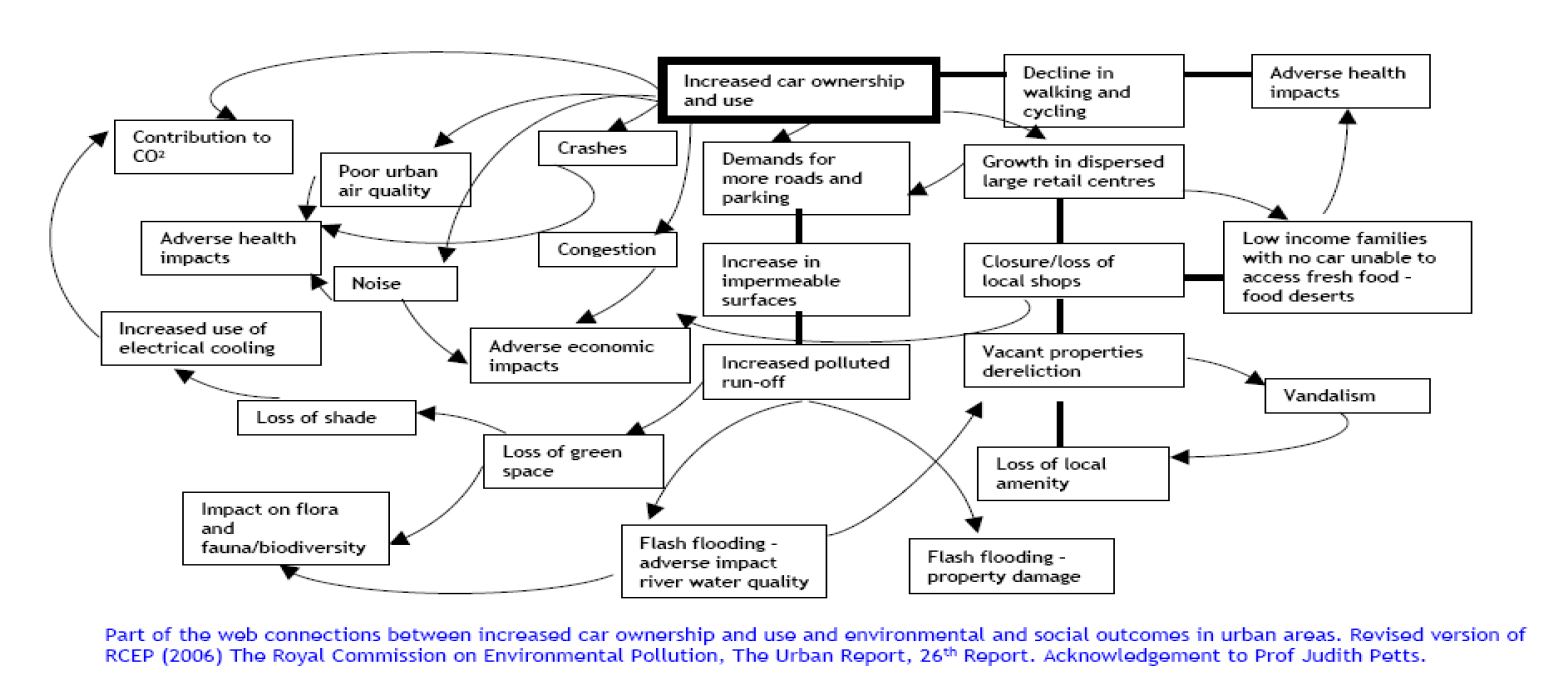35: Urban Environment
Dr Adrian Davis
Top line: Tackling urban environment problems not only benefits the environment, but improves the health and wellbeing of citizens and should be seen as central to economic viability by making towns and cities more attractive places to live and work.
For the first time in human history, over half the world’s population lives in urban areas. In the UK, over 80% of the population already lives in urban areas, and the country is going through a new phase of urban expansion and regeneration that will affect the way we live for decades to come. Urban areas have major environmental impacts that can be felt globally, but they may also experience severe problems within their own boundaries.
Compact urban areas offer significant environmental advantages such as encouraging greater use of public transport, active travel modes, and more efficient energy systems. Consequently, good quality urban areas can be stimulating and offer opportunities not found elsewhere. But the urban environment places stresses and strains on human health and wellbeing that contribute to tens of thousands of deaths each year and a considerable burden of ill health. As noted previously1 there is an unacceptably high disease burden as a result of current transport policy, the greatest element of which is the development of sedentary lifestyles and consequent elevated risk of ill-health and premature death. Most of these problems are not unique to urban areas, but are important because of population levels and the aggravating impact of factors associated with urban areas, such as high vehicle emissions levels, poor housing and a lack of good quality green space.
There are many opportunities to improve towns and cities if the complexity of the forces at work within society is taken into account, and interventions made in the right ways and at the right levels.2 The systems map below indicates the connectivity between car ownership, use and health. It may help in appreciation of environment and health impacts.
1 See Essential Evidence No. 29 http://www.bristol.gov.uk/ccm/content/Transport-Streets/Walking-Cycling/cycling-inbristol/essential-evidence/essential-evidence.en
2 Royal Commission on Environmental Pollution: 2006 The Urban Environment, 26th Report, London: RCEP.
